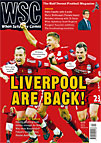 Alan Fisher on Tottenham Hotspur’s plans for a new ground
Alan Fisher on Tottenham Hotspur’s plans for a new ground
Given the swingeing cuts in the Post Office over the past decade, the opening of a new branch is newsworthy wherever the location. But for the residents of Tottenham, it has a special meaning. Not only is it a valuable civic amenity restored six months after it was destroyed in the riots that tore through London last summer, it is also a significant symbol of recovery. The community in Tottenham is striving to rebuild its emotional strength as well as the bricks and mortar of a scarred High Road.
Three days earlier came the declaration of a far grander development less than half a mile away. Haringey Council finally agreed planning permission for the ambitious Northumberland Development Project (NDB), which includes a supermarket, housing, college and health facilities and, crucially, improved transport links surrounding a 56,250-capacity stadium for Tottenham Hotspur. Despite the disparity in size and scope, it is debatable as to which will be of greater benefit to local people.
This state-of-the-art ground is the bowl with a soul. It will be built next to White Hart Lane with steepling stands close to the pitch and a single-tier “end”. The design honours the club’s heritage and will generate atmosphere. After the protests last year, fans are delighted. It helps that Spurs are third in the Premier League on the back of some breathtaking attacking football. The income from an extra 20,000 tickets and a ring of corporate boxes should enable Spurs to compete financially with all but the very biggest clubs.
Chairman Daniel Levy is also aware of his club’s broader responsibilities to the people of N17. Spurs are permanently among the world’s top 15 clubs in terms of income, yet their ground is in a ward that rates among the five per cent most deprived in the country. Figures released in the same week as the NDP announcement showed youth unemployment in Haringey has risen by 90 per cent in the last year. It is now the fourth highest in England, but funding for youth activities has been cut by 70 per cent.
After the disturbances, Levy pledged to support the community while simultaneously pursuing relocation to the Olympic site in east London. Thankfully Spurs have left the legacy farce to others. But the true extent of his commitment to Tottenham remains in doubt. The council meeting had barely concluded before the media picked up on another element of the planning decision, one that allowed Spurs to renege on £16 million of funding for affordable housing and infrastructure improvements.
The area will benefit from the new stadium. The difference is, Spurs are not paying. Regeneration funding from local and central government stimulated in the aftermath of the riots will cover the cost. Nearly 300 new homes will encourage private buyers and families, but they may prove too expensive for local people. The proceeds will offset Spurs’ expenditure on the stadium. The loss of the affordable housing is a blow to a borough with over 3,000 people on the waiting list, but the council were prepared to make the sacrifice in return for Spurs’ undertaking to remain in Tottenham. The vote was unanimous, but as one resident told me: “Why should we love Spurs? They wanted to leave us. They were paid to stay.”
In her role as the Business Connector for Tottenham, Kay Horne has been seconded by Sainsbury’s to develop links between local businesses and community groups. She has a unique perspective and is infectiously enthusiastic about the opportunities: “I love the area with a passion. I’ve never met so many good people. It would be so enriching to work together and rebuild Tottenham from the ashes.”
Most locals and traders broadly welcome the project, but Spurs remain detached from a neighbourhood that desperately needs their help. Through the Spurs Foundation, the club gives generously to a variety of schemes, ranging from coaching for children and adults with learning disabilities, through to an excellent long-standing education project. Jermain Defoe participates in a mentoring scheme for young people in care. However, these projects have never had a significant impact in Tottenham. Most activities take place outside the borough, where they reach out to the fans, not the community.
Kay’s sentiments are echoed by a fans’ group called Spurs Future. They propose a variant of the Community Shares scheme that has enabled fans to help smaller clubs with financial problems. It has never before been tried in the Premier League. Enhanced and permanent community engagement is one of their prime aims.
Six months ago, Victoria Hart comforted a terrified child as the riots raged outside. She summed up the thoughts of most locals: “I would rather have Spurs without affordable housing than lose the club too. The decision is disappointing but not surprising. I hope the prestige of the club will bring life to the area in the wake of the redevelopment.”
From WSC 302 April 2012